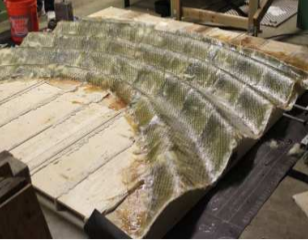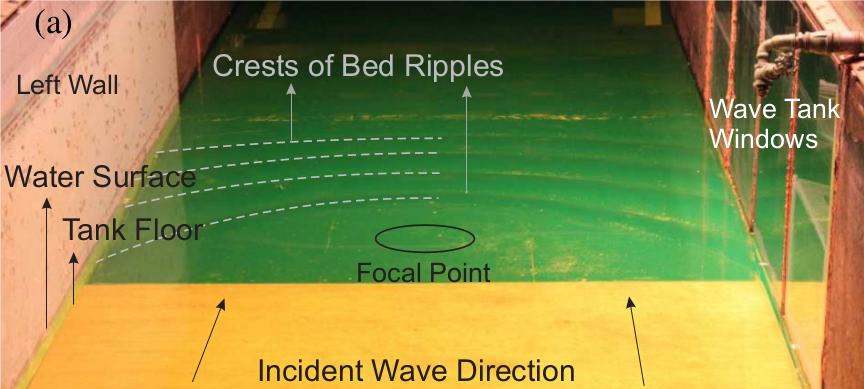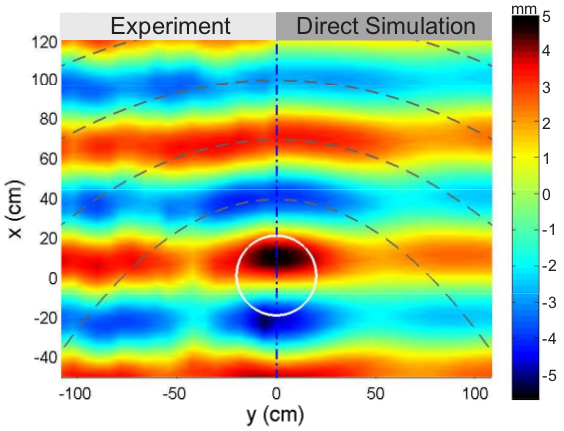Gravity Wave Lensing
a water wave lens for renewable energy
The characteristics of a beach are shaped by interactions between ocean waves and the topography of the ocean floor. As waves approach the shore, the gradual reduction in water depth causes them to slow down, increase in height, and eventually crest over. At certain beaches, the placement of sandbars can create rip currents, making it challenging for swimmers to reach the shore at certain locations. Furthermore, the shape of the ocean floor affects wave height and can create spots with sizeable waves that are favored by surfers. Each beach has its own distinct features due to the natural variability of the ocean floor.

Ocean topography engineering has been explored as a means of concentrating wave energy in specific areas to increase the efficiency and commercial viability of wave energy extraction. During my undergraduate studies at TAFLab at UC Berkeley, I was tasked with experimentally demonstrating how engineered topographies can concentrate wave energy. To showcase this effect on a small scale, I led a team of approximately ten individuals, including graduate students and professors, in constructing a 2.4m x 2.4m topography. Additionally, I developed a way to measure the elevation of the two-dimensional water surface over time using laser-induced fluorescence. After a month of intense coding, I analyzed the results and found that they aligned with simulations. I published the results of this experiment in Physical Review E.


Left: the topography in a wave tank. Florescent dye makes the water green.
Right: comparison of experiment with a numerical simulation